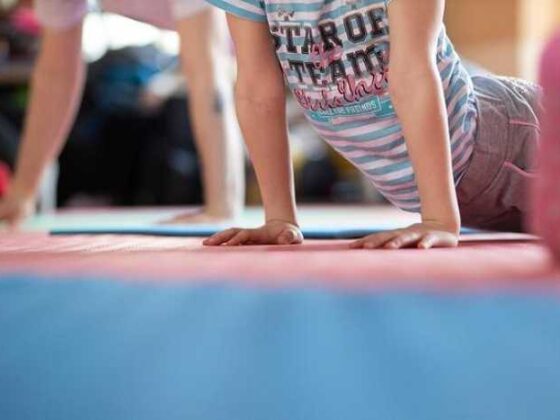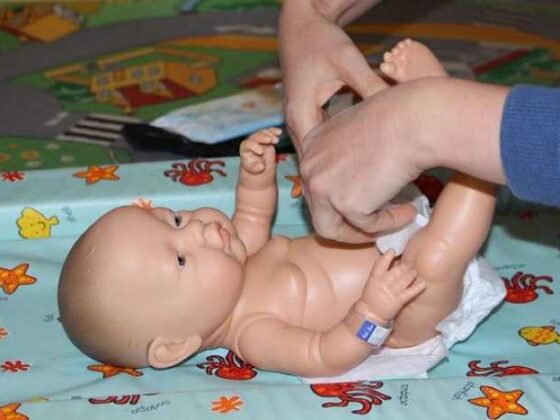Hey there, parents and caregivers! if you’re navigating the wild-and wonderfully messy-world of baby training, you’ve come to the right place.Whether it’s encouraging those first wobbly steps, introducing new sounds, or setting up a little routine that makes everyone’s life easier, ”Baby Training 101: Simple Tips for Happy Little Learners” is here to help. We’re breaking down easy, stress-free ways to support your tiny human’s growth while keeping the giggles flowing. ready to turn those challenges into cheerful milestones? Let’s dive in!
Understanding Your Baby’s Learning Style for Better Engagement
Every baby picks up on the world differently, so tuning into their unique way of learning can turn everyday moments into magical learning opportunities. Some little ones love to explore with their hands, eagerly grabbing toys and textures to understand how things work, while others are all about sounds and music, responding best to soothing songs or playful noises. Then, there are those who observe carefully, soaking in every little detail before joining in, needing a bit more time to process what’s happening around them.
To keep your baby happily engaged, try mixing up activities that cater to different learning styles. Here’s a quick cheat sheet to get started:
- Kinesthetic learners: Encourage lots of tummy time and sensory play with soft blocks, water, or sand.
- Auditory learners: Use songs, gentle rhymes, and varied voice tones during playtime.
- Visual learners: Brightly colored toys, contrasting patterns, and facial expressions can grab their attention.
| Learning Style | Engagement tip |
|---|---|
| Kinesthetic | Soft sensory toys for hands-on exploration |
| Auditory | Singing nursery rhymes and talking consistently |
| Visual | High-contrast books and colorful mobiles |
Creating a Playful Routine that Sparks Curiosity
Turning daily activities into mini adventures is key to igniting your little one’s natural curiosity.Mix familiar routines with a splash of surprise-this could mean swapping out bland toys for colorful, textured ones or turning cleanup time into a silly dance party. Remember, the goal is to create joyful experiences that invite exploration rather than strict schedules that feel like chores. Keep a basket of interesting objects nearby, and let your baby’s hands and eyes guide their discoveries.
Consider incorporating playful elements that encourage problem-solving and sensory engagement.Here’s a quick checklist of ideas to get started:
- Peek-a-boo with everyday items: Hide small toys under cups or scarves to build anticipation and surprise.
- Texture exploration: Use soft fabric squares, bumpy balls, or even safe kitchen utensils for tactile learning.
- Sound seekers: Introduce instruments like shakers or pots and pans to discover cause and effect.
Using this approach, routines transition from predictable to playful, ensuring your baby stays engaged and excited to learn.
| Routine Activity | Playful twist | Curiosity Sparked |
|---|---|---|
| Mealtime | Let baby touch different textured foods | Sensory exploration |
| Bath Time | Use floating toys or cups for pouring | Cause and effect |
| Walking Practice | Place colorful targets to reach for | Goal-oriented play |

easy Everyday Activities to Boost Brain Development
Engaging your little one in simple daily activities can substantially enhance their cognitive growth without feeling like a chore. Try incorporating interactive play such as naming objects around the house, singing nursery rhymes together, or even using colorful blocks to build creativity and fine motor skills. These moments not only stimulate brain connections but also create positive associations with learning. Don’t forget to make eye contact and smile-emotional bonding is just as crucial for healthy brain development!
Another fun way to spark your baby’s curiosity is through sensory exploration. Let your baby touch different textures like soft fabrics, smooth spoons, or bumpy toys. You can also introduce simple cause-and-effect games, like dropping toys into a basket or pressing buttons that make sounds. Below is a quick guide to easy activities, perfect for busy parents looking for natural ways to boost brain growth:
| Activity | Skill Developed | Why It Helps |
|---|---|---|
| Peek-a-Boo | Object Permanence | Teaches your baby that things still exist even when hidden |
| Listening to Music | Auditory Processing | Enhances memory and language skills by tuning ears to sounds |
| Stacking Cups | Hand-Eye Coordination | Encourages problem-solving and spatial awareness |
| Touch & feel Books | Sensory Awareness | Stimulates different senses while fostering focus |
Gentle Ways to Encourage New Skills Without Stress
Introducing little ones to new skills is all about creating a safe and loving environment where curiosity can blossom without pressure. Start by breaking down tasks into tiny, manageable steps that match their current abilities. Celebrate small victories with lots of smiles, cuddles, and encouraging words – this positive reinforcement builds their confidence far more than correcting mistakes. Remember, every baby learns at their own pace, so patience is your best friend. Allow plenty of time for free play,where they can explore on their own terms and discover new things naturally.
Creating a cozy, distraction-free learning nook can also make a world of difference.Surround your little learner with colorful toys, soft textures, and interactive objects that invite exploration. Keeping sessions short and sweet helps prevent frustration, as toddlers can get overwhelmed easily. Here are some gentle strategies you can try:
- Model behaviors: Babies learn by watching, so demonstrate new skills slowly and clearly.
- Use playful repetition: Repeat activities with fun variations to spark engagement.
- Offer choices: Let them pick between two toys or activities to foster autonomy.
- Incorporate songs or rhymes: Rhythm and music make learning memorable and enjoyable.
| Stress Signal | Calming Tip |
|---|---|
| Fussiness | Switch to a favorite comfort toy or song |
| Avoidance | Try a new angle or simplify the activity |
| crying | Hold and soothe before trying again later |
Q&A
Q&A: Baby Training 101 – Simple Tips for Happy Little Learners
Q: what exactly is “baby training”? Isn’t that a bit weird to say?
A: Great question! When we say “baby training,” it’s really just about helping your little one learn new skills in a fun, gentle way. Think of it as guiding them through everything from tummy time to learning to sit or clap.It’s less about strict rules and more about playful learning.
Q: When should I start “training” my baby?
A: as soon as they’re born, actually! Baby training just means engaging with your baby daily-talking, singing, playing peek-a-boo. It all lays the foundation for development. But for specific skills like sitting up or potty training,you’ll want to wait until they show readiness-usually a few months old or later.
Q: What are some super simple tips for happy little learners?
A: Here are a few easy-peasy ones to try:
- Keep it short and sweet. Babies get bored or tired fast, so 5-10 minutes tops.
- Make it fun! use toys,funny faces,songs,anything that keeps them smiling.
- Follow their cues. If they seem fussy or over-stimulated, it’s okay to take a break.
- Repeat, repeat, repeat. Babies learn by seeing things over and over.
- Celebrate tiny wins. Every little clap, smile, or wiggle is progress!
Q: How do I know if my baby is ready for certain milestones like crawling or potty training?
A: Look for signs like being able to sit with support before crawling, or showing interest in the potty and communicating when they’re wet before potty training. Every baby’s timeline is different, so be patient and keep things pressure-free.
Q: What if my baby isn’t hitting milestones “on time”? Should I worry?
A: Usually, no need to stress! Babies develop at their own pace. If you have concerns, chatting with your pediatrician is always a good move. But remember, lots of “late bloomers” catch up just fine.
Q: Can I use technology or apps to help with baby training?
A: Screen time for babies under 18 months isn’t recommended, but there are some well-designed apps or videos you can use sparingly with adult interaction. The best “training” always involves real human connection-your face, voice, and touch.
Q: What’s the most meaningful thing to remember during baby training?
A: Keep the love strong and the pressure low. Babies are tiny humans soaking up the world – your patience, smiles, and encouragement matter most. Make every interaction a happy moment, and you’re already winning!
Hope this helps you and your little learner thrive! Got more questions? Drop them in the comments below! 🌟
Final Thoughts
And there you have it-some easy, stress-free tips to help your little one on their learning journey! Remember, every baby learns at their own pace, so keep things fun, be patient, and celebrate those little victories along the way. With a bit of love and consistency, you’re setting the stage for a happy, curious learner who can’t wait to explore the world. Happy training,super parents-you’ve got this!











